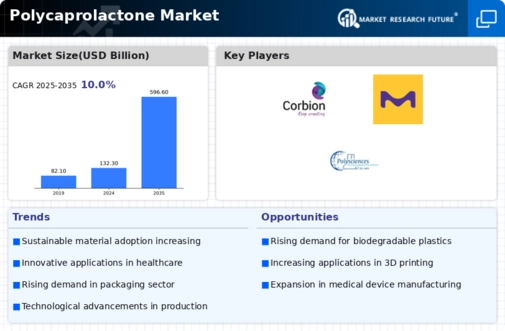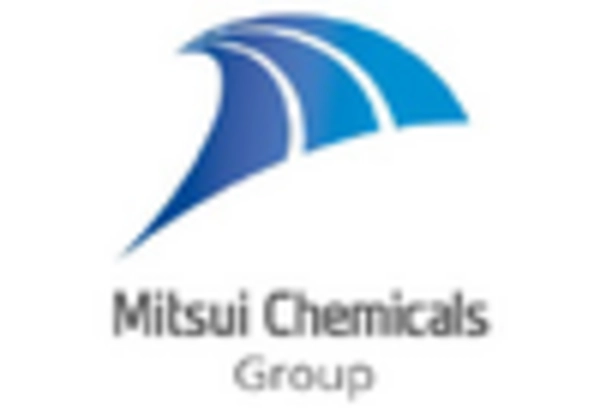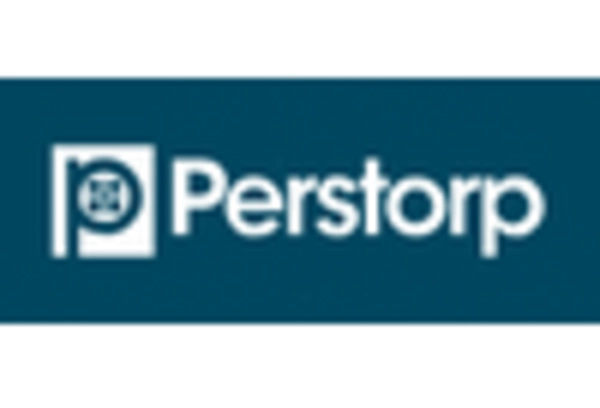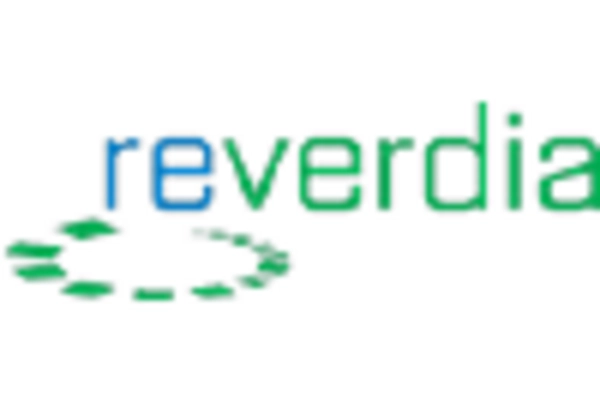-
Executive Summary
-
Scope of the Report
-
Market Definition
-
Scope of the Study
- Research Objectives
- Assumptions & Limitations
-
Market Structure
-
Market
-
Research Methodology
-
Research Process
-
Secondary Research
-
Primary Research
-
Forecast Model
-
Market Landscape
-
Supply Chain Analysis
-
Market Dynamics of Global Polycaprolactone Market
-
Drivers
-
Trends/Strategies
-
Raw Material Suppliers
-
Manufacturers/Producers
-
Distributors/Retailers/Wholesalers/E-Commerce
-
End-Users
-
Porter’s Five Forces Analysis
- Threat of New Entrants
- Bargaining Power of Buyers
- Bargaining Power of Suppliers
- Threat of Substitutes
- Intensity of Competitive Rivalry
-
Introduction
-
Restraints
-
Opportunities
-
Challenges
-
Global Polycaprolactone Market, by Form
-
Introduction
-
Pellet
- Market Estimates & Forecast, 2020–2027
-
Market Estimates & Forecast, by Region, 2020–2027
-
Nanosphere
- Market Estimates & Forecast, 2020–2027
- Market Estimates
-
& Forecast, by Region, 2020–2027
-
Microsphere
- Market
- Market Estimates & Forecast,
-
Estimates & Forecast, 2020–2027
-
by Region, 2020–2027
-
Global Polycaprolactone Market, by Production
-
Method
-
Introduction
-
Ring Opening Polymerization
- Market
- Market Estimates & Forecast,
-
Estimates & Forecast, 2020–2027
-
by Region, 2020–2027
-
Polycondensation of Carboxylic Acid
- Market Estimates &
-
Market Estimates & Forecast, 2020–2027
-
Forecast, by Region, 2020–2027
-
Global Polycaprolactone Market,
-
by Application
-
Introduction
-
Thermoplastic Polyurethane
- Market Estimates &
-
Market Estimates & Forecast, 2020–2027
-
Forecast, by Region, 2020–2027
-
Healthcare
- Market Estimates
- Market Estimates & Forecast, by Region,
-
& Forecast, 2020–2027
-
Others
- Market Estimates & Forecast, 2020–2027
- Market Estimates & Forecast, by Region, 2020–2027
-
Global
-
Polycaprolactone Market, by Region
-
Introduction
-
North America
- Market Estimates & Forecast, 2020–2027
- Market Estimates
- Market Estimates & Forecast,
- Market Estimates & Forecast,
- US
- Canada
-
& Forecast, by Form, 2020–2027
-
by Production Method, 2020–2027
-
by Application, 2020–2027
-
Forecast, 2020–2027
-
Market Estimates & Forecast, by Production Method, 2020–2027
-
Market Estimates & Forecast, by Application, 2020–2027
-
Europe
- Market Estimates & Forecast, 2020–2027
- Market Estimates
- Market Estimates & Forecast,
- Market Estimates & Forecast,
- Germany
- France
-
& Forecast, by Form, 2020–2027
-
by Production Method, 2020–2027
-
by Application, 2020–2027
-
& Forecast, 2020–2027
-
Form, 2020–2027
-
Method, 2020–2027
-
Italy
-
Market Estimates & Forecast, by Form, 2020–2027
-
& Forecast, by Production Method, 2020–2027
-
& Forecast, by Application, 2020–2027
-
Estimates & Forecast, 2020–2027
-
by Form, 2020–2027
-
Method, 2020–2027
-
Market Estimates
-
Market Estimates
-
Spain
-
Market
-
Market Estimates & Forecast,
-
Market Estimates & Forecast, by Production
-
Market Estimates & Forecast, by Application,
-
UK
-
Market Estimates & Forecast, 2020–2027
-
Market Estimates & Forecast, by Form, 2020–2027
-
Market Estimates & Forecast, by Production Method, 2020–2027
-
Market Estimates & Forecast, by Application, 2020–2027
-
Estimates & Forecast, by Form, 2020–2027
-
& Forecast, by Production Method, 2020–2027
-
& Forecast, by Application, 2020–2027
-
Market Estimates & Forecast, 2020–2027
-
& Forecast, by Form, 2020–2027
-
by Production Method, 2020–2027
-
by Application, 2020–2027
-
Estimates & Forecast, 2020–2027
-
by Form, 2020–2027
-
Method, 2020–2027
-
China
-
Russia
-
Market Estimates & Forecast, 2020–2027
-
Market
-
Market Estimates
-
Market Estimates
-
Poland
-
Market Estimates
-
Market Estimates & Forecast,
-
Market Estimates & Forecast,
-
Rest of Europe
-
Market
-
Market Estimates & Forecast,
-
Market Estimates & Forecast, by Production
-
Market Estimates & Forecast, by Application,
-
Asia-Pacific
- Market Estimates & Forecast,
- Market Estimates & Forecast, by Form, 2020–2027
- Market Estimates & Forecast, by Production Method, 2020–2027
- Market Estimates & Forecast, by Application, 2020–2027
-
Market Estimates & Forecast, by Form, 2020–2027
-
& Forecast, by Production Method, 2020–2027
-
& Forecast, by Application, 2020–2027
-
Estimates & Forecast, 2020–2027
-
by Form, 2020–2027
-
Method, 2020–2027
-
Market Estimates
-
Market Estimates
-
India
-
Market
-
Market Estimates & Forecast,
-
Market Estimates & Forecast, by Production
-
Market Estimates & Forecast, by Application,
-
Japan
-
Market Estimates & Forecast, 2020–2027
-
Market Estimates & Forecast, by Form, 2020–2027
-
Market Estimates & Forecast, by Production Method, 2020–2027
-
Market Estimates & Forecast, by Application, 2020–2027
-
& New Zealand
-
Australia
-
Market Estimates & Forecast, 2020–2027
-
Market Estimates & Forecast, by Form, 2020–2027
-
Market Estimates & Forecast, by Production Method, 2020–2027
-
Market Estimates & Forecast, by Application, 2020–2027
-
& South Korea
-
Indonesia
-
Market Estimates & Forecast, 2020–2027
-
Market Estimates & Forecast, by Form, 2020–2027
-
Market Estimates & Forecast, by Production Method, 2020–2027
-
Market Estimates & Forecast, by Application, 2020–2027
-
of Asia-Pacific
-
Rest
-
Market Estimates & Forecast, 2020–2027
-
Market Estimates & Forecast, by Form, 2020–2027
-
Market Estimates & Forecast, by Production Method, 2020–2027
-
Market Estimates & Forecast, by Application, 2020–2027
-
Middle East & Africa
-
Estimates & Forecast, by Production Method, 2020–2027
-
Estimates & Forecast, by Application, 2020–2027
-
Market Estimates & Forecast, 2020–2027
-
Forecast, by Form, 2020–2027
-
by Production Method, 2020–2027
-
by Application, 2020–2027
-
& Forecast, 2020–2027
-
Form, 2020–2027
-
Method, 2020–2027
-
Turkey
-
Market Estimates & Forecast, 2020–2027
-
Market Estimates & Forecast, by Form, 2020–2027
-
Market
-
Market
-
GCC
-
Market Estimates &
-
Market Estimates & Forecast,
-
Market Estimates & Forecast,
-
Israel
-
Market Estimates
-
Market Estimates & Forecast, by
-
Market Estimates & Forecast, by Production
-
Market Estimates & Forecast, by Application,
-
North Africa
-
Market Estimates & Forecast,
-
Market Estimates & Forecast, by Form, 2020–2027
-
Market Estimates & Forecast, by Production Method, 2020–2027
-
Market Estimates & Forecast, by Application, 2020–2027
-
Market Estimates & Forecast, 2020–2027
-
Market Estimates & Forecast, by Form, 2020–2027
-
& Forecast, by Production Method, 2020–2027
-
& Forecast, by Application, 2020–2027
-
& Africa
-
Market Estimates
-
Market Estimates
-
Rest of the Middle East
-
Market Estimates & Forecast, 2020–2027
-
Market Estimates & Forecast, by Form, 2020–2027
-
& Forecast, by Production Method, 2020–2027
-
& Forecast, by Application, 2020–2027
-
Market Estimates & Forecast, 2020–2027
-
Forecast, by Form, 2020–2027
-
Production Method, 2020–2027
-
Application, 2020–2027
-
Forecast, 2020–2027
-
Market Estimates
-
Market Estimates
-
Latin America
- Market Estimates &
- Market Estimates & Forecast, by
- Market Estimates & Forecast, by
- Brazil
- Mexico
-
Market Estimates & Forecast, by Production Method, 2020–2027
-
Market Estimates & Forecast, by Application, 2020–2027
-
Estimates & Forecast, by Form, 2020–2027
-
& Forecast, by Production Method, 2020–2027
-
& Forecast, by Application, 2020–2027
-
Estimates & Forecast, by Form, 2020–2027
-
& Forecast, by Production Method, 2020–2027
-
& Forecast, by Application, 2020–2027
-
Argentina
-
Market Estimates & Forecast, 2020–2027
-
Market
-
Market Estimates
-
Market Estimates
-
Rest of Latin America
-
Market Estimates & Forecast, 2020–2027
-
Market
-
Market Estimates
-
Market Estimates
-
Company Landscape
-
Introduction
-
Market Strategy
-
Key Development Analysis
-
(Expansions/Mergers
-
& Acquisitions/Joint Ventures/New Product Developments/Agreements/Investments)
-
Company Profiles
-
Perstorp Holding AB
- Company Overview
- Financial Updates
- Production Method/Business Segment Overview
- Strategy
- Key Developments
- SWOT Analysis
-
Daicel Corporation
- Company Overview
- Financial Updates
- Production Method/Business Segment Overview
- Strategy
- Key Developments
- SWOT Analysis
-
Shenzhen Esun Industrial
- Company Overview
- Financial Updates
- Strategy
- Key
- SWOT Analysis
-
Co., Ltd
-
Production Method/Business Segment Overview
-
Developments
-
Corbion
- Company Overview
- Financial Updates
- Production Method/Business Segment Overview
- Strategy
- Key Developments
- SWOT Analysis
-
BASF SE
- Company Overview
- Financial Updates
- Strategy
- Key
- SWOT Analysis
-
Production Method/Business Segment Overview
-
Developments
-
Merck KGaA
- Company
- Financial Updates
- Production Method/Business Segment
- Strategy
- Key Developments
- SWOT Analysis
-
Overview
-
Overview
-
Polysciences, Inc.
- Company Overview
- Financial Updates
- Production Method/Business Segment Overview
- Strategy
- Key Developments
- SWOT Analysis
-
Haihang Group
- Financial Updates
- Production Method/Business
- Strategy
- Key Developments
-
Company Overview
-
Segment Overview
-
SWOT Analysis
-
Shenzhen Polymtek Biomaterial Co., Ltd
- Company
- Financial Updates
- Production Method/Business Segment
- Strategy
- Key Developments
- SWOT Analysis
-
Overview
-
Overview
-
Durect Corporation
- Company Overview
- Financial
- Production Method/Business Segment Overview
- Key Developments
- SWOT Analysis
-
Updates
-
Strategy
-
Conclusion
-
LIST OF TABLES
-
Global Polycaprolactone Market, by Region,
-
North America: Polycaprolactone Market, by Country,
-
Europe: Polycaprolactone Market, by Country, 2020–2027
-
Asia-Pacific: Polycaprolactone Market, by Country, 2020–2027
-
Middle East & Africa: Polycaprolactone Market, by Country, 2020–2027
-
Latin America: Polycaprolactone Market, by Country, 2020–2027
-
Global Polycaprolactone Form Market, by Region, 2020–2027
-
North America: Polycaprolactone Form Market, by Country, 2020–2027
-
Europe: Polycaprolactone Form Market, by Country, 2020–2027
-
Table10 Asia-Pacific: Polycaprolactone Form Market, by Country, 2020–2027
-
Table11 Middle East & Africa: Polycaprolactone Form Market, by Country,
-
Table12 Latin America: Polycaprolactone Form Market, by Country,
-
Table13 Global Polycaprolactone Production Method Market,
-
by Region, 2020–2027
-
Table14 North America: Polycaprolactone Production
-
Method Market, by Country, 2020–2027
-
Table15 Europe: Polycaprolactone
-
Production Method Market, by Country, 2020–2027
-
Table16 Asia-Pacific:
-
Polycaprolactone Production Method Market, by Country, 2020–2027
-
Table17
-
Middle East & Africa: Polycaprolactone Production Method Market, by Country,
-
Table18 Latin America: Polycaprolactone Production Method
-
Market, by Country, 2020–2027
-
Table19 Global Polycaprolactone Application
-
Market, by Region, 2020–2027
-
Table20 North America: Polycaprolactone
-
Application Market, by Country, 2020–2027
-
Table21 Europe: Polycaprolactone
-
Application Market, by Country, 2020–2027
-
Table22 Asia-Pacific: Polycaprolactone
-
Application Market, by Country, 2020–2027
-
Table23 Middle East &
-
Africa: Polycaprolactone Application Market, by Country, 2020–2027
-
Table24
-
Latin America: Polycaprolactone Application Market, by Country, 2020–2027
-
Table25 Global Form Market, by Region, 2020–2027
-
Table26 Global
-
Production Method Market, by Region, 2020–2027
-
Table27 Global Application
-
Market, by Region, 2020–2027
-
Table28 North America: Polycaprolactone
-
Market, by Country
-
Table29 North America: Polycaprolactone Market, by Form
-
Table30 North America: Polycaprolactone Market, by Production Method
-
Table31
-
North America: Polycaprolactone Market, by Application
-
Table32 Europe: Polycaprolactone
-
Market, by Country
-
Table33 Europe: Polycaprolactone Market, by Form
-
Table34
-
Europe: Polycaprolactone Market, by Production Method
-
Table35 Europe: Polycaprolactone
-
Market, by Application
-
Table36 Asia-Pacific: Polycaprolactone Market, by Country
-
Table37 Asia-Pacific: Polycaprolactone Market, by Form
-
Table38 Asia-Pacific:
-
Polycaprolactone Market, by Production Method
-
Table39 Asia-Pacific: Polycaprolactone
-
Market, by Application
-
Table40 Middle East & Africa: Polycaprolactone Market,
-
by Country
-
Table41 Middle East & Africa Polycaprolactone Market, by Form
-
Table42 Middle East & Africa Polycaprolactone Market, by Production Method
-
Table43 Middle East & Africa: Polycaprolactone Market, by Application
-
Table44 Latin America: Polycaprolactone Market, by Country
-
Table45 Latin
-
America Polycaprolactone Market, by Form
-
Table46 Latin America Polycaprolactone
-
Market, by Production Method
-
Table47 Latin America: Polycaprolactone Market,
-
by Application
-
LIST OF FIGURES
-
Global Polycaprolactone
-
Market Segmentation
-
Forecast Research Methodology
-
Porter’s
-
Five Forces Analysis of Global Polycaprolactone Market
-
Value Chain
-
of Global Polycaprolactone Market
-
Share of Global Polycaprolactone
-
Market in 2020, by Country (%)
-
Global Polycaprolactone Market, 2020–2027,
-
Global Polycaprolactone Market Size by Forms, 2020
-
Share
-
of Global Polycaprolactone Market, by Form, 2020–2027
-
Global
-
Polycaprolactone Market Size, by Production Method, 2020
-
Share of
-
Global Polycaprolactone Market, by Production Method, 2020–2027
-
FIGURE
-
Global Polycaprolactone Market Size, by Application, 2020
-
Share
-
of Global Polycaprolactone Market, by Application, 2020–2027

















Leave a Comment